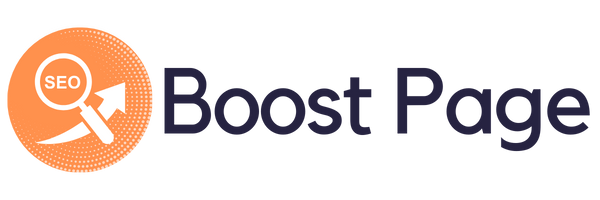
“AI-run” does not mean replacing all humans. It means re-architecting business workflows so that AI systems perform large portions of repetitive, information-processing, or prediction tasks while people design goals, provide oversight, handle exceptions, and make final calls. Evidence from recent cross-sector studies shows AI can accelerate knowledge work and narrow skill gaps when it is deployed with controls and human review. At the same time, the same research warns of quality risks if guardrails are weak. The Stanford AI Index synthesizes dozens of field experiments and concludes that AI boosts throughput and often improves work quality across writing, coding, and customer service, especially for less-experienced workers.
Macro-level estimates are becoming more sober. An IMF working paper on Europe projects medium-term productivity gains around 1% cumulatively over five years, reflecting adoption frictions, regulatory constraints, and heterogeneous task suitability—important context for return-on-investment planning. OECD analysis similarly frames AI as a production technology whose impact depends on complementary capital (data, skills, process redesign) and governance. In short: large gains are achievable, but only with deliberate organization design, risk management, and change management.
From a compliance and safety standpoint, governments and standards bodies have converged on risk-based frameworks. The EU AI Act classifies systems by risk level and imposes obligations accordingly; the NIST AI Risk Management Framework (AI RMF) offers practical, voluntary controls (Govern–Map–Measure–Manage); and ISO/IEC 42001:2023 defines an auditable AI management system. These together give leaders a blueprint to scale AI while meeting regulatory expectations and stakeholder trust requirements.
Functions AI Can Run Today: An End-to-End View of the Enterprise
AI is most valuable when it is embedded into core processes with clear objectives, quality thresholds, and escalation paths. The table below maps high-leverage business functions to AI capabilities and the most relevant governance references for safe deployment.
| Business function | AI can run… | Human role | Governance references |
| Customer operations | Triage, routing, knowledge retrieval, response drafting | Review complex cases; quality spot checks | NIST AI RMF; EU AI Act transparency rules |
| Sales & marketing | Segmentation, propensity scoring, content drafts | Strategy, brand, compliance review | FTC guidance on avoiding deceptive AI claims |
| Finance & risk | Anomaly detection, reconciliations, first-line monitoring | Exceptions, policy, final sign-off | BIS/FSB on AI in finance; model risk controls |
| HR & talent | Screening aids, interview scheduling, skills matching | Bias audits, adverse-impact testing, decisions | EEOC guidance on AI in employment |
| IT & cybersecurity | Code assistance, ticket triage, threat detection | Secure coding standards, incident response | ISO/IEC standards (42001; 27001 alignment) |
Well-designed deployments align with the EU’s risk-based approach—minimal oversight for low-risk uses and rigorous controls for high-risk ones. The NIST AI RMF provides concrete actions for mapping use cases, measuring risks, and managing them through lifecycle checkpoints. ISO/IEC 42001 then operationalizes governance with policies, roles, KPIs, and continuous improvement—useful if you anticipate audits or need to demonstrate conformity to customers and regulators.
Sector-specific authorities add depth. In finance, the Bank for International Settlements and the Financial Stability Board outline benefits and systemic risks. In HR, the U.S. EEOC clarifies that anti-discrimination laws apply to AI tools, and offers publications on assessing adverse impact—critical for compliant hiring automations.
The Operating Model: People-in-the-Loop and Control-by-Design
Running work with AI requires three layers: (1) task decomposition, (2) orchestration, and (3) oversight. Start by breaking processes into steps and assigning steps to the most suitable mechanism—rule-based automation, predictive models, or generative systems. Then use orchestration to pass work among systems. Finally, embed human review where regulatory obligations, safety risks, or economic impact justify it. The NIST AI RMF Playbook enumerates practical actions for each lifecycle phase, which you can map directly to your software development and quality gates.
Governance should be continuous, not episodic. ISO/IEC 42001 recommends establishing an AI policy, defining responsibilities, maintaining an inventory of AI systems, assessing impacts before deployment, and tracking incidents and improvements—mirroring how many firms already manage information security under ISO/IEC 27001. This “management system” approach turns AI from ad-hoc pilots into a repeatable operating capability with audit trails. Pair it with clear model documentation and change control for updates, retraining, and prompt revisions.
Because AI systems can affect rights and safety, transparency and explainability matter. The EU AI Act requires specific disclosures for certain categories, while the UK Information Commissioner’s Office provides step-by-step guidance on explaining AI-assisted decisions under data-protection law.
Risk, Compliance, and Trust: The Non-Negotiables
Three families of requirements safeguard an AI-run business: (1) safety/robustness, (2) privacy/fairness, and (3) truthful communications.
- Safety & robustness. Build adversarial tests and stress scenarios into model evaluation; monitor drift; and set automated kill-switches when metrics breach thresholds. The NIST AI RMF provides measurable outcomes and control ideas across “Map–Measure–Manage,” while ISO/IEC 42001 elevates them into policy and audit artifacts. For highly regulated uses, align with sector guidance from BIS/FSB.
- Privacy & fairness. Where personal data is processed, apply privacy-by-design and human oversight for impactful decisions. The UK ICO’s Guidance on AI and Data Protection details fairness, transparency, accuracy, and lawfulness. For employment uses, consult EEOC publications on AI-based selection, disability accommodations, and adverse-impact analysis before deploying screening tools.
- Truthful communications. Marketing or product claims about AI must be accurate and non-deceptive. The U.S. Federal Trade Commission has brought cases and published guidance warning that there is “no AI exemption” from existing consumer-protection law.
Workforce Impact: What Tasks Shift to AI—and How to Lead the Transition
AI primarily changes tasks, not whole jobs. The International Labour Organization finds that generative AI’s largest effects are on task composition and job quality, with transformation rather than mass displacement in many occupations. Exposure varies by sector and activity; clerical and routine cognitive tasks are more affected than hands-on roles.
Training must be timely and contextual. The Stanford AI Index reports that AI narrows performance gaps for less-experienced workers when paired with clear instructions and feedback loops. However, performance can degrade if workers over-rely on AI without verification. Design “human-in-the-loop” patterns: give employees structured prompts, checklists for acceptance criteria, and escalation routes for ambiguous cases. Measure both speed and quality so gains don’t come at the cost of errors or compliance breaches.
Finally, invest in inclusion. The World Bank highlights the need to strengthen data ecosystems, skills, and infrastructure to ensure broad, equitable gains. Budget for connectivity, data governance, and basic digital skills alongside model licenses or compute.
Finance, Risk, and Compliance Use Cases: What “AI-Run” Looks Like in Practice
In finance functions, AI can run first-line reconciliations, flag exceptions in payables/receivables, and detect anomalies in expense reports. Supervisors emphasize both promise and systemic risk. The BIS maps how AI may reshape intermediation, insurance, asset management, and payments, while the FSB details concentration risks, explainability limits, and potential herding.
Practically, align internal policies with supervisory language. For example, maintain a register of AI systems impacting risk-weighted assets or customer suitability; document training data sources; and subject material models to independent validation. Use NIST AI RMF artifacts and ISO/IEC 42001 procedures to demonstrate governance maturity to auditors and clients.
Because finance is tightly interconnected, scenario testing matters. Stress test model drift, data outages, and novel fraud patterns; predefine fallbacks such as rule-based controls and manual review pools.
Marketing and Customer Experience: Personalization With Protections
AI can draft campaigns, segment audiences, and predict churn propensity—work that used to consume large analyst teams. The challenge is doing this responsibly. Consumer-protection authorities caution against overstating capabilities or hiding limitations. Teams should keep substantiation files, disclose automated interactions where required, and avoid dark patterns.
Data use must be lawful and fair. Where personal data informs targeting or personalization, the UK ICO guidance details transparency, purpose limitation, data minimization, and methods for explaining automated decisions. Incorporate user controls and clearly label AI-generated recommendations or content.
To maintain brand safety and accuracy at scale, implement layered review: AI drafts, automated checks for compliance, and human approval for regulated claims.
HR and People Operations: Using AI Without Breaking the Law
AI can handle scheduling, draft job descriptions, and support screening by highlighting applicants who meet objective criteria. But employment decisions carry heightened legal risk. The U.S. EEOC emphasizes that anti-discrimination rules apply to AI-assisted tools across recruiting, monitoring, promotions, and terminations. Before using AI for any employment decision, conduct bias testing, document job-relatedness, and provide accommodation pathways for candidates with disabilities.
Explainability and transparency are also essential. The ICO provides detailed guidance on explaining decisions made with AI—use it to craft candidate notices, identify meaningful features, and develop appeal mechanisms. Logging and auditability are not optional; they are the backbone of your legal defense and the basis for trust with employees.
Finally, avoid “automation bias.” Keep humans responsible for final employment decisions, require reviewers to confirm key facts, and rotate spot checks.
Health, Safety, and Highly Regulated Domains: Extra Guardrails
Where AI touches health and safety, governance must be stricter. The World Health Organization urges caution with large language and multimodal models in health contexts and provides detailed ethics and governance guidance for AI in health.
From a management-systems perspective, adopting ISO/IEC 42001 helps healthcare providers embed AI governance into existing quality and safety regimes, alongside information-security standards such as ISO/IEC 27001.
In any safety-critical setting, implement conservative fail-safes: conservative thresholds, dual review, out-of-distribution detection, and explicit “don’t know” behaviors that route to clinicians or specialists.
Implementation Roadmap: From Pilot to Production at Scale
A pragmatic path to an AI-run enterprise looks like this:
- Establish governance and AI policy.
- Prioritize use cases with measurable ROI and manageable risk.
- Design workflows with human-in-the-loop steps.
- Build controls such as impact assessments and bias testing.
- Measure outcomes across speed, quality, and compliance.
- Scale and certify with ISO/IEC 42001 conformity.
Metrics and KPIs: Proving Value Without Compromising Integrity
Measure both performance and risk. Example KPIs include:
- Cycle time reduction and first-pass yield.
- Factual accuracy rate, compliance error rate, human-overrule rate.
- Adverse-impact ratios, false-positive rates by segment.
- Model-drift indicators, time-to-fallback during outages.
Benchmark internal results against industry studies, and sustain audits to ensure gains persist.
Conclusion: Make AI Boring—So It Can Be Big
AI’s promise becomes real when it is routine: mapped to business goals, measured like any other process, and governed with rigor. Use NIST’s control language to organize work, ISO/IEC 42001 to institutionalize it, and rules from EU, ICO, EEOC, and FTC to keep it lawful and fair. Evidence from leading institutions suggests solid gains are available when AI augments people with clear standards and feedback loops. That is how AI can run most of the work of a business—without running you into unnecessary risk.





